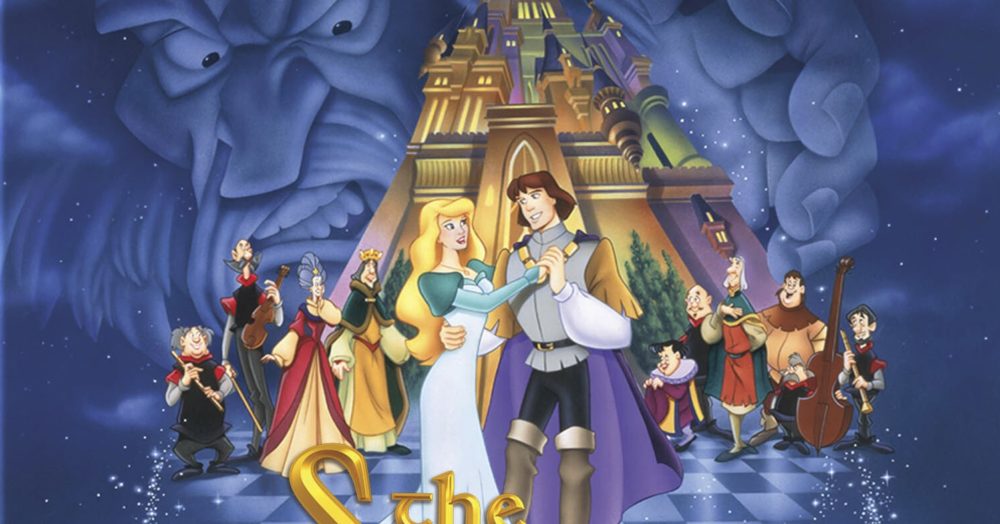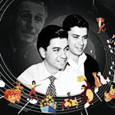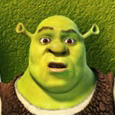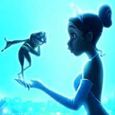In honor of the 25th anniversary of The Swan Princess, the animated classic will be available in brilliant high definition for the first time ever, with a collectible anniversary edition Blu-ray and in 4K HDR on digital from Sony Pictures Home Entertainment on October 29th.
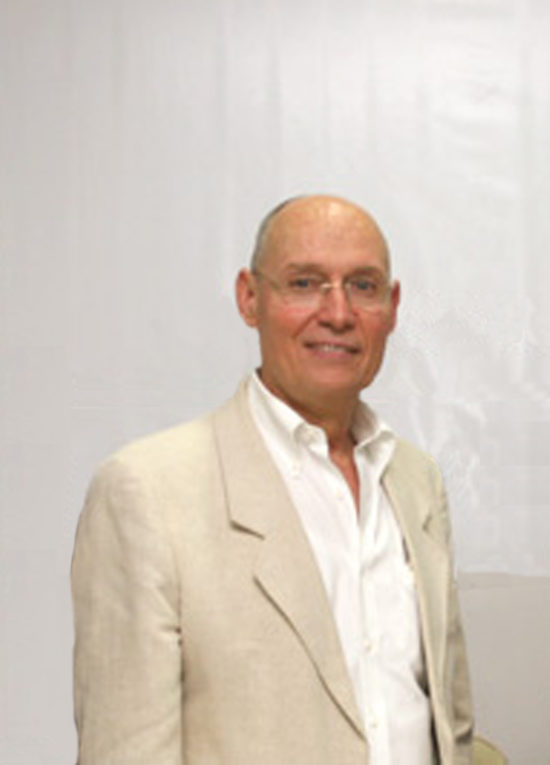
The story of The Swan Princess began with Director Richard Rich, an animation filmmaker trained in the Disney tradition of animation where he went to direct films at the studio. Inspired by the German fairy tale and ballet about a princess who is swan by day and princess by night, Rich worked with film founder Seldon Young and Executive Producer Jared Brown, to make Princess Odette the subject of their first joint venture onto the silver screen with The Swan Princess. The result is a magical, musical animated adventure film based on the classic fairy tale “Swan Lake,” now celebrating its 25th anniversary.
A Film Advisory Board Award of Excellence and the Parents’ Choice Award winner, The Swan Princess is the heartwarming story of the beautiful princess Odette, who is transformed into a swan by an evil sorcerer’s spell. Held captive at an enchanted lake, she befriends Jean-Bob the frog, Speed the turtle and Puffin the bird. Despite their struggle to keep the princess safe, these good-natured creatures can do nothing about the sorcerer’s spell, which can only be broken by a vow of everlasting love.
Animated Views recently had the opportunity to speak with Rich about the legacy of The Swan Princess. In addition to his resume at Disney, Rich directed all of the Swan Princess sequels, and also helmed the Rankin/Bass 1999 animated remake of The King & I.
AV: When you were working on The Swan Princess back in 1994, how would you have reacted if someone had told you that, in 2019, you would still be giving interviews about it?
Richard: “It was totally unexpected and unforeseen. I thought that The Swan Princess had been put to bed in the late 90’s. It’s been unbelievable, and such an incredible experience as a director to go back into a movie made 25 years ago and update with all the technology both in sound and in picture and do a 4K version with 7.1 stereo. We had all the elements to do that, and I have to say that the most exciting thing was that I was able to capture and color correct the picture that matched the original artwork that we created 25 years ago with a paintbrush. Quite remarkable. We kind of pride ourselves and claim that we were the last fully hand-painted animated feature that was released.”

AV: So let’s go back in time for a minute. What prepared you for making The Swan Princess?
Richard: “Well, I was very fortunate to get my training at Disney. I worked at Disney for 14 years. And I worked with one of the ‘nine old men’ there, John Lounsberry. I started working with him as an assistant director on Winnie the Pooh and Tigger Too. I owe so much to Disney. They gave me opportunities that were quite unique for a person who was not an animator. But I was able to co-direct The Fox and the Hound and The Black Cauldron. So I learned my skills and my skill set and earned my credentials by working at Disney. And without that, I wouldn’t have been able to do this. So it was a good experience.”

AV: So from a professional level, what was the difference between working for Disney as opposed to working on your own animated feature?
Richard: “Well, it was my own studio. I pretty much did The Swan Princess as I did a feature for Disney. We had all in-house artists on this one and a huge staff. I did the storyboarding, and all of those things that I had learned so well at Disney, I was able to duplicate. Now, it was a pretty daunting process to be the one who was totally in charge, but at the same time, it was incredibly exciting. And I would say that what was the most remarkable part of that was that the people who came to work on (our movie) wanted to be there. There was really no rhyme or reason why this film got made. It was a picture against all odds at that time during the 90’s, for an independent company to be able to take on a feature while trying to acquire the talent and the artists (that we did). And the artists gave their whole heart to this production. They wanted it to succeed, and they gave their very best every day for two and a half years to make this happen.”
AV: Let’s talk about the process of adapting the story of “Swan Lake” into an animated feature. The original tale kind of has a dark ending, in that Odette actually dies. How did you go about giving a pretty grim narrative a happier ending?
Richard: “We kept what we thought were the very best parts of the fairy tale. We kept the name ‘Odette,’ and we kept the name ‘Rothbart.’ The Prince in the fairy tale was called Siegfried, and we felt we needed a more contemporary name for him, so we gave him ‘Derek.’ And there were things like the princess changing into a swan, we kept that. But we knew we couldn’t have an ending where the princess died. When I started this, I was looking for a fairy tale that would be done in the vein of Cinderella or Sleeping Beauty, because that’s what’s great about them. We didn’t try to do all of the contemporary things that were popular at the time. We stuck with classical storytelling, and classical comedy and romance, and the music has a Broadway feel.”
“So then I think we talked about adapting the story, and that was really hard. It took a good year to break (it all together). One of the great breakthroughs for us was the moon. We needed some kind of visual element which would trigger Odette turning from a swan into a princess and then back from a princess into a swan. So when we came up with the idea that it was the moon, it worked so well because we needed to have one night where Odette could not change, and that was the night when the moon could not come out because the sky was dark. So that was the breakthrough for us in cracking the story.”
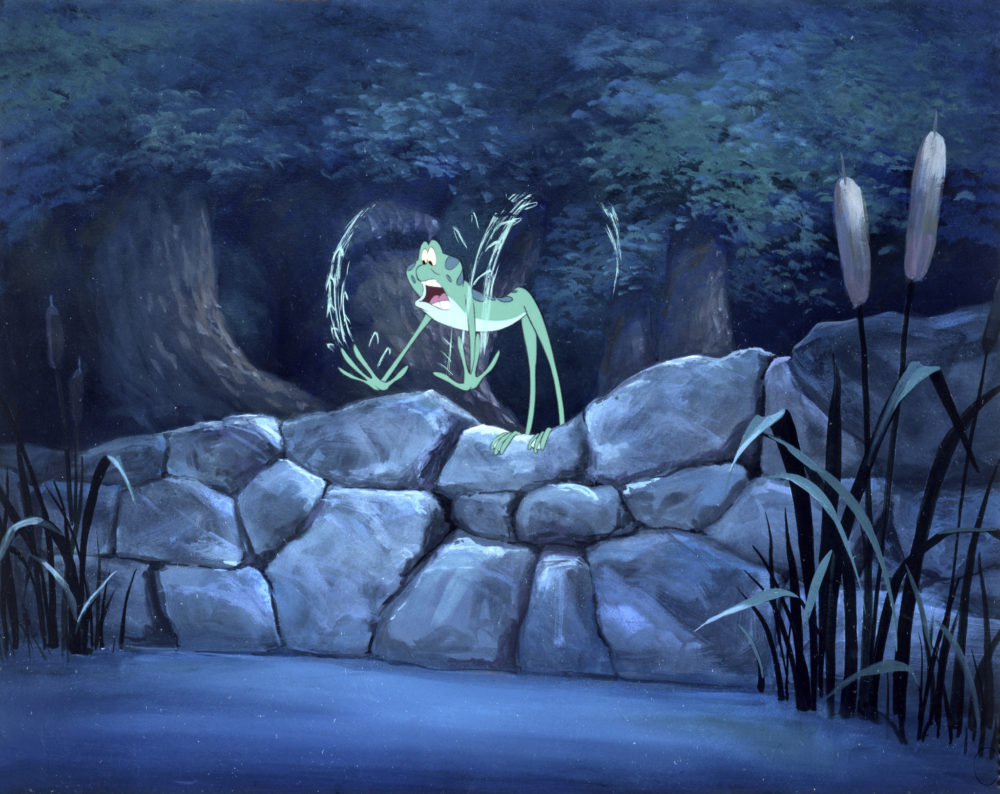
AV: The voice cast is pretty impressive for this movie, with big names like Jack Palance as Rothbart and John Cleese as Jean-Bob the frog. How did you go about casting the film?
Richard: “Let’s start with Odette. Because I wanted the movie to be in the classical vein, I thought that I needed New York stars, you know, Broadway stars. So we hired two casting directors who worked on Broadway musicals. And I went to New York and voice tested a lot of incredible actresses. But I was looking for that actress who had a natural voice that sounded like a princess. Not a ‘sicky sweet’ princess, but a real, honest, goodness princess. And I didn’t find one in all of those auditions.”
“So we went back to Los Angeles, where the voice casting directors were setting up interviews (of people they knew there), and one was Michelle Nicastro. She was playing in the cast of Les Miserables at that time. She came in to audition, and she walked in with her natural princess voice, and as I got to know her, not only was her voice a princess, but she was a princess. She was good, she was incredibly talented, and she was extremely kind-hearted. Everything I wanted in Odette, Michelle Nicrasto was in her own life. And she brought all of that to the role, and that is why she has become pretty much an iconic princess in the world of animation.”
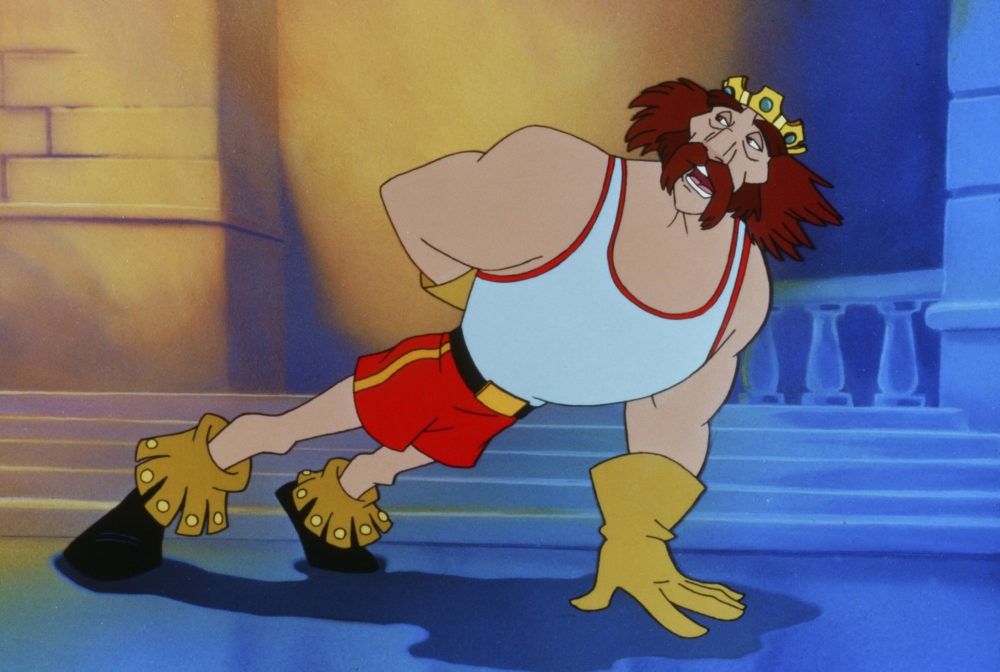
AV: And then by contrast you have Rothbart, who is this menacing bad guy, but also very entertaining, and Jack Palance plays a big role in that.
Richard: “Rothbart’s an interesting story. We wrote the script for The Swan Princess, and he was a very dark one-tone, one-beat kind of a villain. And that summer, when we were doing the voice casting, you might remember the movie City Slickers came out, and Jack Palance was kind of at a career high. He was incredible in that. And we felt ‘wow, he has such a unique take to his speaking, and such a unique, deep quality of a voice.’ And he was able to be dark but comedic at the same time, and we felt ‘wow, that will change Rothbart from a very dark, one-beat kind of villain to a comedy villain.’ And he did that exactly.”
“We even wrote a song for Rothbart called ‘Rothbart’s Revenge,’ and it was a really dark song in which he was out to get Derek and Odette. No way was he going to lose Odette to Derek. And we recorded it, and it was really dark, and then came Jack Palance, and he brought a whole new thing to the part as I mentioned. So the song we re-wrote as “No More Mr. Nice Guy” and it changed everything. It gave us a really fun, fun moment for the villain to sing a song that he reveled in. And you can go to The Swan Princess’s YouTube channel, and ‘Rothbart’s Revenge’ is on there . It was very dark, and we storyboarded it, and recorded it, but it was just too dark. And that was one of the big changes we made.”
(You can watch “Rothbart’s Revenge” in the player below)
Richard: “Oh, John Cleese was fantastic. So Brian Nissen was the writer with me on it. And John Cleese was in London for the Monty Python series. And we watched a ton of clips of him. And there was one clip where he was doing a French accent, and we felt ‘wow, we gotta try to get him.’ And we worked it out. What was neat about that was that Brian Nissen and I went to London, and John invited us to his home there. And we went over the script, and he tried out all of these different voices trying to find one that was really great. And we recorded him there, we recorded him there in London. It was an incredible and really fun experience. He was really nice, just really a trooper to be a part of it.”
AV: Let’s talk about songs, but with a focus on two of them, “This is My Idea,” which opens the film, and “Far Longer Than Forever,” which has sort of become the anthem of this franchise and even got a Golden Globe nomination. Let’s start with “This is My Idea,” though, because that’s such efficient storytelling in that it chronicles Odette and Derek growing up as kids who can’t stand each other before turning into young adults who are very much in love.
Richard: “I have to say I really agonized over that. Trying to really sustain an opening song for six minutes. Could we really do that? But once I felt that it was a musical sequence as opposed to a musical song, you can see that it goes through lots of variations of musical orchestrations and themes and everything. And it just flows, and it becomes more sophisticated as they grow up, and then the ending with the beautiful love kind of thing that’s pretty great. And that has stood the test of time. Seldon Young (one of the film’s producers) goes around to Comic-Con, and someone from Florida was there who had done a lot of reviews of everything, and he says ‘That has got to be the best opening of any animated feature there has ever been.’ That was a real compliment coming from somebody like him. He was over-the-top excited about that. And people really enjoying listening to and watching that sequence. There is something that we all identify with that song, growing up and going through those feelings that Derek and Odette went through, even to the point when one falls in love. That’s a great song. I love it. It’s one of my most cherished moments of being able to do in the movie.”
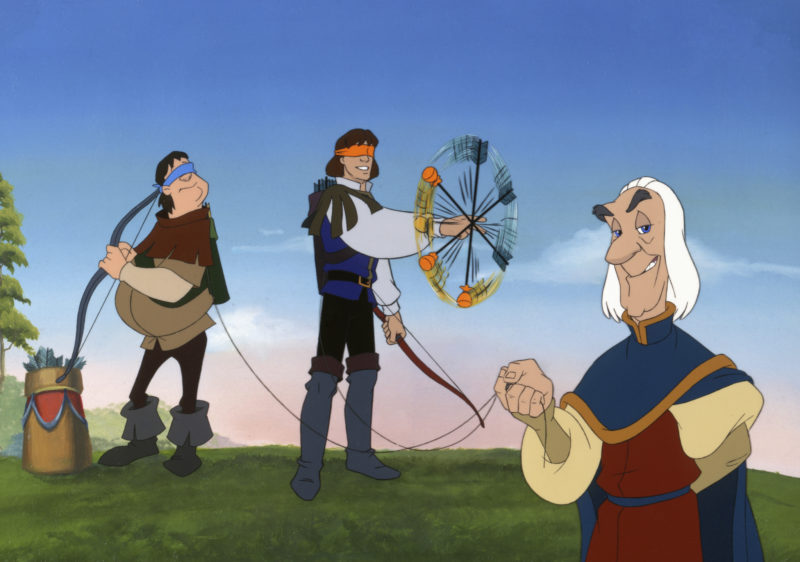
AV: Can you tell us about the big one, the love ballad “Far Longer Than Forever”?
Richard: “I think that what’s so neat about that song is that in that moment (of the movie), the last time Derek and Odette saw each other, they left with broken hearts, because Odette was determined not to give in to just beauty and Derek was feeling a little bit cocky and prideful. And then everything goes on that gets them separated. And then both of them one night are looking at the stars thinking of the person they love, they sing this love duet, and it has a theme that is so true, that true love truly lasts longer than forever. And I think one of the reasons why that song is one that has captured in our hearts is the melody, which I have to say is an incredible thing to hear, and once you do, it’s hard to get out of your mind. And it has truly become the theme song of the series.”
AV: “Were there any major story changes made over the course of production, or did you stick to your original treatment?”
Richard: “You know, you’re the only one to ever ask that question, and I have to tell you it went through immense changes. We tested the picture with audiences when we finally got it all put together, in story reels and animatics and all of that. We tested it, and what came back was that people really didn’t like Derek. And I was shocked, because I loved him! Then I started to analyze that the way it was at that time, and at that time, Derek did nothing. And so there was all of this stuff that we did about Derek being the one who believed that Odette was still alive. And we started having him doing kind things, like after the song ‘Practice, Practice, Practice,’ he goes up to the duck and says ‘Sorry, take a few days off.’ We had him do all of these really kind things.”
“And in the original script, we never had him say what he really loved about Odette. That was added at the same time. And we had that speech he gives after Rothbart’s been shot, and he runs back to Odette and he tells her about how good and how compassionate she is, and her kindness, and that those were the things he loved about her. That was not in the original script. And all of a sudden Derek became an incredibly good, honest role model for boys to follow. And because he was concerned about Odette in an honest, true way, it wasn’t just her beauty.”

“And what’s likable about this whole story is, well, you know that line where Derek says “Arrange the marriage!” And Odette’s like “Wait…” And he’s like “But why? You’re beautiful!” And she says “What else?” And he says “What else is there?” And she’s like “What else is there? Is beauty the only thing that counts?” Even today, that is so important and that resonates, and that has given girls who have watched and love this show confidence that they can stand up against anything just like Odette. She is a role model for young women, as strong today as she was 25 years ago. And in some ways, it’s even more appropriate today than it was then.”
AV: Unfortunately, when it came to theaters, The Swan Princess wasn’t a hit. However, it became a huge success on home video. Were you surprised when that happened?
Richard: “I was relieved! I gotta tell you, when the film was released that day, you probably know that the re-release of The Lion King was put out at the same time. And I went that day to the theater, took a bunch of kids with me and watched it and had a good time. It wasn’t as full as I had hoped it would be that day because people were going to see The Lion King again. That didn’t really matter in the long run of things, but that night I was feeling really, really bad. I don’t know if I’ve ever felt that bad in my whole life. And I was getting hourly reports of how it was doing across the country, and my wife turned to me and said ‘It doesn’t matter. You made a great picture.’ And once she said that to me, it all changed. It meant everything in the world for her to say that. I knew I had made a great picture because my wife is a tough critic.”
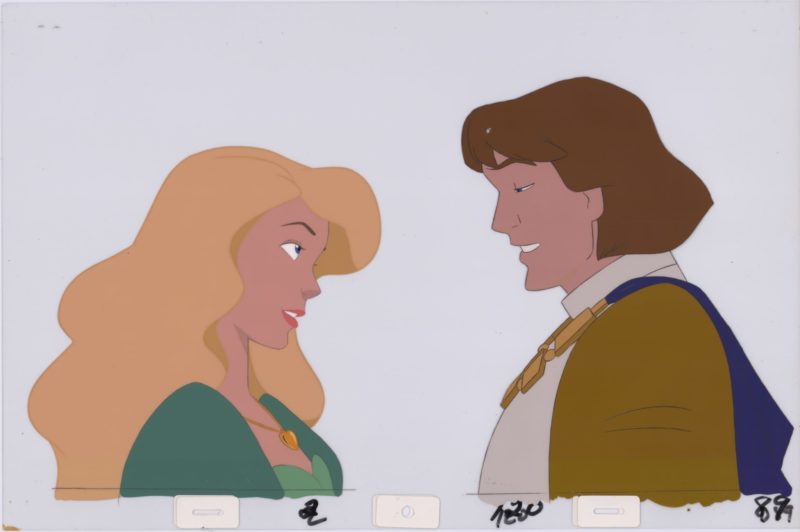
“And I knew that people liked it because it was so successful on home video. And it has continued to grow. I have never gone anywhere where someone hears that I worked on The Swan Princess where they haven’t gone ‘That was the picture of my childhood! I loved that picture! I watched it so many times!’ And it’s not just girls. A lot of guys watched it too. Derek is a great guy to watch!”
AV: Let’s talk about the sequels for a moment, as there have been several of them. How did you go about working on those?
Richard: “I have done every Swan Princess since the beginning. There hasn’t been anything done on Swan Princess that I haven’t done. It’s my heart, it’s my soul, my vision, and so nobody was ever considered for those but myself. Now I don’t want to sound full of myself, since I’m not that way. But no one has ever asked that question before either, so I don’t have an answer for it. But it was never in question that I wouldn’t do them. We are now working on Swan 10, and we’re using the same opening music underneath the title of the show as we have with all of the Swan Princess films that we’ve done. 10 is just being worked on now and won’t be out until next year.”
AV: And the later sequels have been done in computer animation. For you as a director, is there any difference between working with computer animation and traditional hand-drawn animation?
Richard: “Well, there is, but a lot of things are exactly the same. The voice recording, the writing of the script. The difference is the art. It takes an enormous amount of talented people to do cel animation. Those kinds of artists are few and far between today. And so it would be difficult to redo it. When we started doing the sequels, Sony’s first thought was that we should do them in 2D. We showed them what it would look like in CGI. At that time I think there were stores that were saying ‘we’re not taking cel animation anymore, we’re only taking CGI.’ And there was a real switch where the kids were expecting and loving CGI, so we did that.”
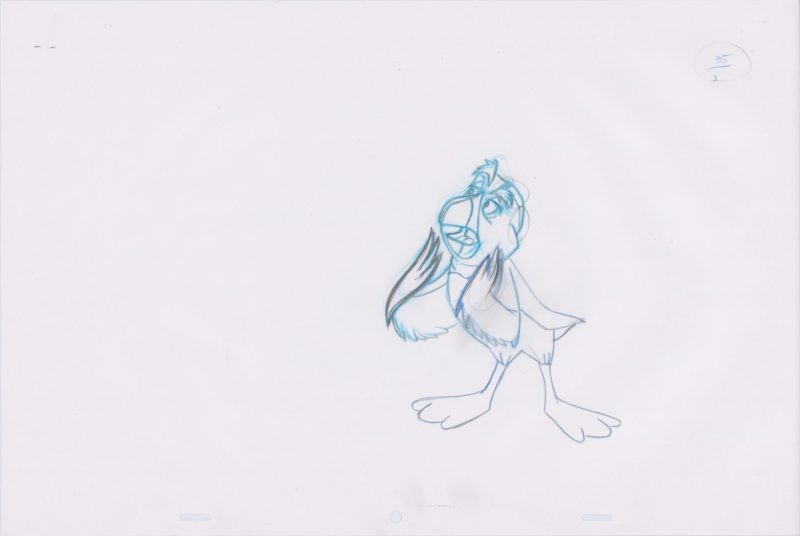
“A couple of the things that are different are, if you look at the animation of the original Swan Princess, it’s very loose and agile. And it’s moving, and we can force facial proportions, stretch them, and we can change costumes, much easier than you can in CGI. The fluidity of the motion is not as fluid in CGI, because it’s more realistic, and it’s rigging, and all that stuff. So there’s that difference. There’s also the difference in the hand painting of the backgrounds, versing what you can get by texturing everything. And as CGI has become bigger and bigger, and Pixar has pushed to become more and more realistic versing the ‘hand-painted’ look, those are differences. Is one better than the other? Not sure. Both have a strong point.”
“The fun for me as a director in CGI is I get to move the camera so much more. In 2D, I can pretty much go left and right, or up and down, but I can’t do these sweeping moves and turns and everything without an enormous amount of work and effort. The weak point in 2D is probably the constant struggle to keep everything on model, so they always look alike, because it’s based on the quality of an artist to be able to do that. So that’s really tough. And it takes a lot more time to go over animation and critique it over and over again. Not in CGI. In CGI, you make a model, and it’s like a human being. It looks like that person no matter what angle you shoot from, no matter what camera move is on them, so that stuff is a real plus in CGI.”
AV: We’ve talked about the 25th anniversary Blu-ray release. Are there any new extras on there you’re excited for the fans to watch?
Richard: “Yeah, there’s a great one about looking back on the last 25 years. And it has great memories and stuff that haven’t been seen before. And you can also go to the Swan Princess YouTube and Instagram pages, as those pages already have a lot of great stuff about what’s happened over the years.”
AV: Let’s wrap up with a loaded question: Why do you think The Swan Princess has lasted as long as it has?
Richard: “There’s a lot of varying reasons that people have for that. My personal belief is that it’s because of the incredible love relationship between Derek and Odette. It has that screen chemistry that is so hard to get that even in live-action you never know if it’s going to be there or not when you start a movie. And I’m sure that’s the same way in animation. And I think the love between the honest and true and self-sacrificing kind of love that Derek and Odette have for each other has withstood time. And it will continue to withstand time. There’s that one scene by the lake where Derek is chasing Odette as a swan, and Odette’s scared to death he’s going to kill her, and he points the arrow at her, and boom, she turns into Odette. The running together of those two and the love that they have for each other thrills me every time, with the big love theme playing, it’s just one of those neat moments. And that’s my personal opinion of what has sustained it over these 25 years.”
Many thanks to Sony Pictures Home Entertainment for sending us material from their archives to use. All copyrights go to them.
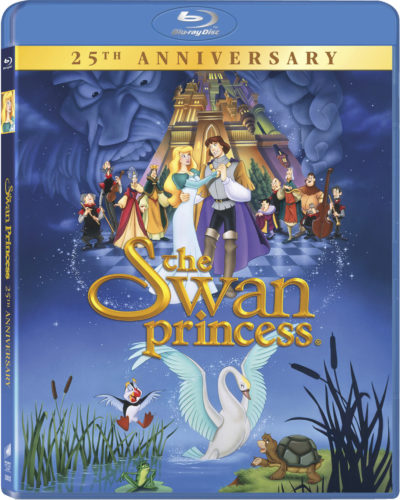
The Swan Princess: 25th Anniversary Edition is now available to own on Blu-ray.


